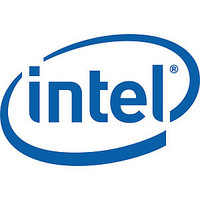lxt351 Intel Corporation, lxt351 Datasheet - Page 21

lxt351
Manufacturer Part Number
lxt351
Description
T1/e1 Short Haul Transceiver With Crystal-less Jitter Attenuation
Manufacturer
Intel Corporation
Datasheet
1.LXT351.pdf
(46 pages)
2.5.3
2.5.3.1
2.5.3.2
2.5.3.3
2.5.3.4
2.5.3.5
Datasheet
Error Insertion and Detection
Bipolar Violation Insertion
Bipolar violation insertion is available In Unipolar mode. Choosing Unipolar mode configures the
INSBPV pin. To insert bipolar violation (BPV), a Low-to-High transition on the INSBPV is
required. Sampling occurs on the falling edge of TCLK. When INSBPV goes High a BPV is
inserted on the next available mark except in the four following situations:
With the LXT351 configured to transmit internally generated data patterns, a BPV can be inserted
into the transmit pattern regardless of whether the device is in the Unipolar or Bipolar mode of
operation.
Logic Error Insertion
When configured to transmit internally generated data patterns, a logic error is inserted into the
transmit data pattern when the INSLER pin transitions Low-to-High. Note that in QRSS mode,
there is no logic error insertion on a jammed bit (i.e., a bit forced to one to suppress transmission of
more than 14 consecutive zeros). The transceiver routes data patterns the same way it routes data
applied to TPOS/TNEG. Therefore, the inserted logic error will follow the data flow path of the
active loopback mode.
Bipolar Violation Detection
When the internal encoders/decoders are disabled or when configured in Unipolar mode, bipolar
violations are reported at the BPV pin. BPV goes High for a full clock cycle to indicate receipt of a
BPV. When the encoders/decoders are enabled, the LXT351 does not report bipolar violations due
to the line coding scheme.
HDB3 Code Violation Detection
An HDB3 code violation (CODEV) occurs when two consecutive bipolar violations of the same
polarity are received (refer to ITU O.161). When CODEV detection is enabled, the BPV pin goes
High for a full RCLK cycle to report a CODEV violation. Note that bipolar violations and zero
substitution violations will also be reported on the BPV pin if these options are enabled.
HDB3 code violation detection is enabled when the HDB3 encoders/decoders are enabled. This
requires that CR1.ENCENB = 1, also CR1.EC3:1 = 000, which establishes E1 operation. To select
CODEV detection, set bit CR4.CODEV = 1.
HDB3 Zero Substitution Violation Detection
An HDB3 ZEROV is the receipt of four or more consecutive zeros. This does not occur with
correctly encoded HDB3 data unless there are transmission errors. The BPV pin goes High for a
full RCLK cycle to report a ZEROV. Note that when ZEROV detection enabled, the BPV pin will
also indicate received BPVs and CODEVs, if these detection options are enabled.
•
•
•
Zero suppression (HDB3 or B8ZS) is not violated
If LLOOP and TAOS are both active, the BPV is looped back to RNEG/BPV indicator and the
line driver transmits all ones with no violation
BPV insertion is disabled with RLOOP active
T1/E1 Short Haul Transceiver with Crystal-less Jitter Attenuation — LXT351
(INSLER)
(INSBPV)
(BPV)
(CODEV)
(ZEROV)
21











